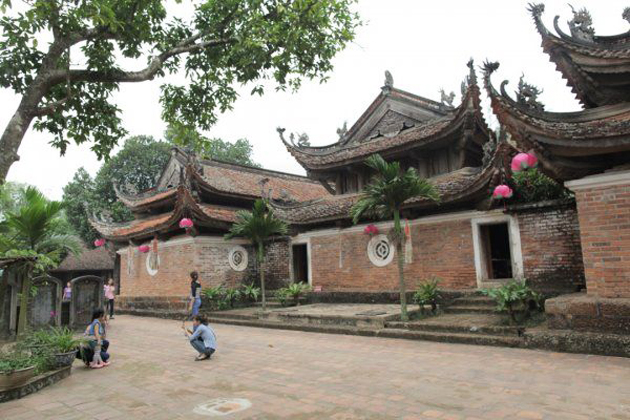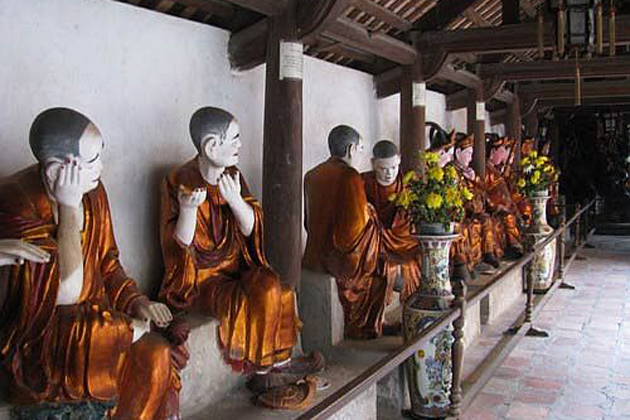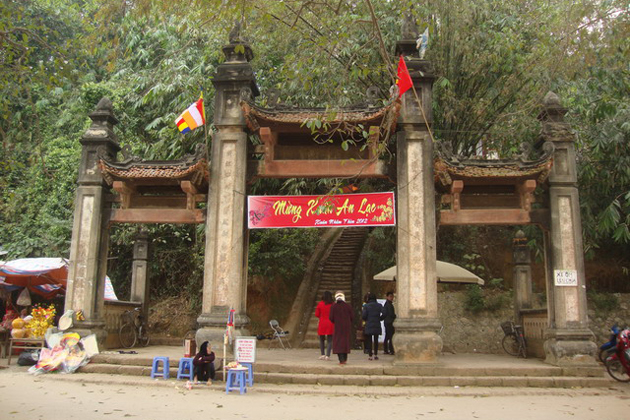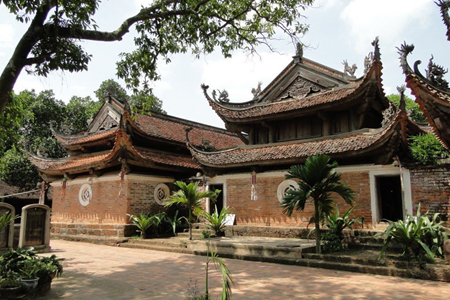Nowadays, Hanoi, a capital has gone through thousands of years of existence along with the heroic history of the nation, still preserves the cultural and historical values of the previous dynasties. For those who are interested in long lasting architecture and history as well as Buddhism, a flourished religion from ancient times in Vietnam, Tay Phuong Pagoda is always a top choice when you have a day trip in Hanoi.
Located on Tay Phuong Mountain belonging Yen village of Thach Xa commune in Thach That District, Hanoi, Tay Phuong Pagoda (also called Sung Phuc Tu) is the pagoda carrying unique values of sculpture with many valuable Buddha statues, and is a testament of a long-standing culture. It is the second oldest pagoda after Dau Pagoda in Bac Ninh province. Tay Phuong Pagoda is considered a museum of Buddha with many unique, lively and soulful ancient statues.

According to legend, the pagoda was founded in the late 6th century. As reported in some studies, the latest establishment also must be from the reign of Mac dynasty with decorative patterns bearing art style in between late 16th century and early 17th century. In 1632, under the reign of King Le Than Tong, the pagoda was repaired with larger size, built upper palace, and harem. In between 1657 and 1682, Lord Trinh Tac allowed to break the old temple, to build new temple. In 1794, the pagoda was completely overhauled, renamed as "Tay Phuong Co Tu", the appearance is very similar to Kim Lien Pagoda along the West Lake, also built under the Tay Son dynasty.
From the bottom of the mountain, to reach the main entrance needs go through 239 laterite steps. Built in the style of typeface ‘Tam’ (三), the pagoda has three folds of house in parallel including Ha Pagoda (lower), Trung (middle) Pagoda, and Thuong (upper) Pagoda, forming a stable and majesty complex. Although each temple bears a distinct architecture, this complex is still harmonious and unified in an airy and quiet atmosphere.

Each building has two layers of roof. Upper roof is tiles with the shape of Bodhi leaf, and lower roof is square tiles with five-color paint as the color of robes put on the lines of wooden rafters. The roof has curved angles combined by the two main materials which are wood and terracotta, with the emerging contours of flowers, leaves, vivid dragon and phoenix, with the height rising to 2.2m. Around edging roofs of the three buildings are sculpted exquisitely and meticulously in the form of leaves. Wall of pagoda is built entirely in Bat Trang brick, wood columns are placed on green rocks, carved lotus petals.
Not only highlighting with unique architecture, Tay Phuong Pagoda is also a place gathering unique works of religious sculpture including carvings, reliefs and statues. Most of the wooden items in the pagoda are carved with the familiar images of Vietnamese people by the hands of artisans, such as the shape of mulberry leaf, Bodhi leaf, lotus, chrysanthemum, dragon, phoenix, tiger and so on. The author of these exquisite sculptures is artisans of the carpentry village in the area of Nong Tua, the traditional village of Chang Son - famous carpentry village in Doai at that time.

The most prominent feature in Tay Phuong Pagoda is the system of statues. There are more than 70 statues in the pagoda with bas-reliefs carved gilded wood. Particularly, 18 Arhat statues are worshiped in Thuong pagoda. They are 18 original followers of the Buddha. Eighteen statues is eighteen individuals, each one has own form, look, and posture. They all have distinct and authentic characteristics. This is the epitome of human society with full of "joy, anger, love, and abomination" and philosophy of human being of Buddhism. Tay Phuong with typical Arhat statues of Vietnam’s sculpture in the 18th century was a unique religious work, representing for Vietnam’s art in Later Le dynasty.
Tay Phuong Pagoda is a living museum of Vietnam’s Buddhism left after a few hundred years of turbulent and war periods. Day after day, a large number of domestic and international tourists climb to sightsee, admire the architectural treasures and traditional sculpture of Vietnam.

